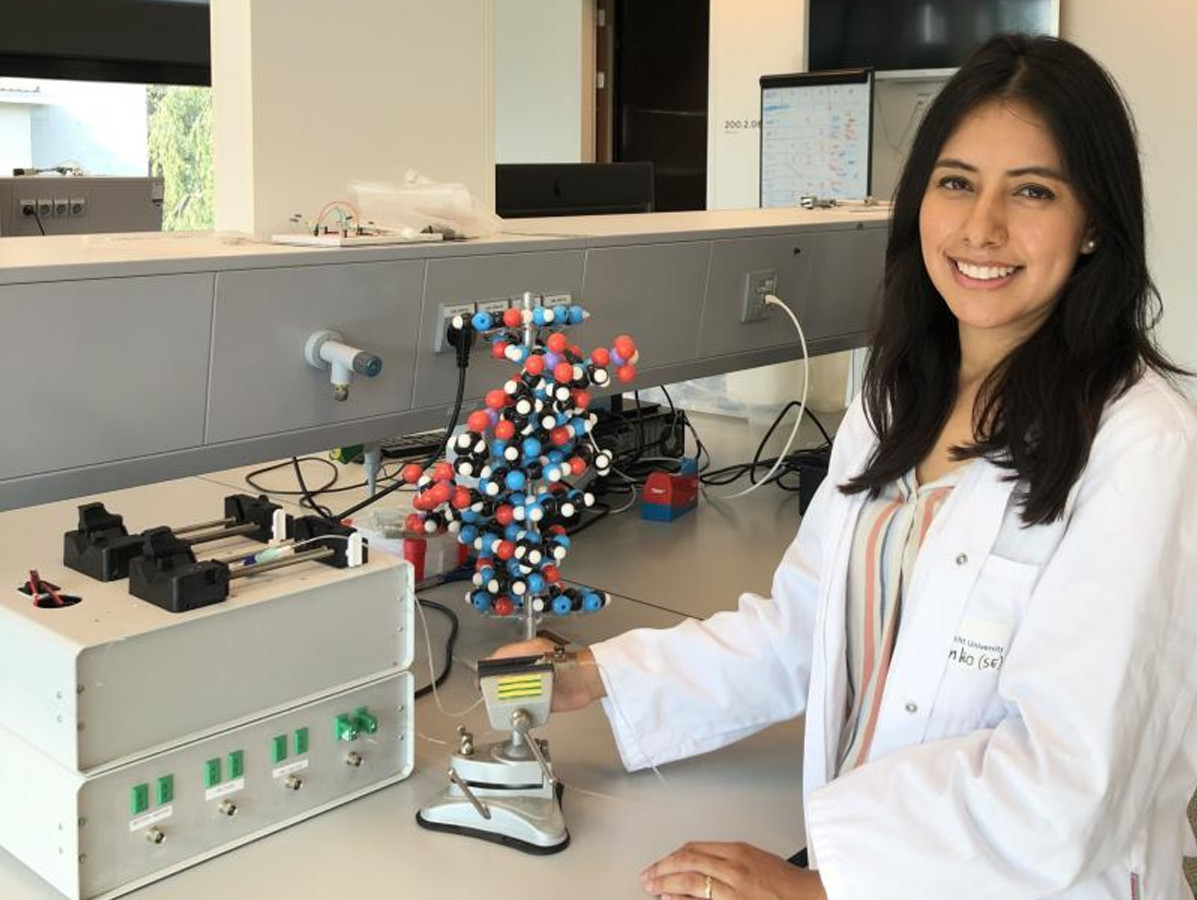
Maastricht University, together with the Belgian universities of Leuven and Hasselt, has developed a sensor technology that can detect harmful bacteria on the spot during the production process. Researcher Rocio Arreguin Campos from Maastricht University is working on the design and testing of this smart sensor.
The scientists use a so-called biomimetic sensor. This sensor uses a synthetic substance to detect another substance, in this case a bacterium. By integrating this sensor into a machine in which a fresh product is made, any contamination can be detected and resolved very quickly.
The new sensor technology works on the basis of synthetic receptors and thermal resistance measurements that enable bacterial contaminants to be identified quickly. The research from the Faculty of Science and Engineering consists of chemically designing these receptors for the sensor and testing the device in the lab.
The sensor has already been tested in samples in the laboratory. At the same time, all the components needed to implement the sensor in a vending machine are being developed. The final component is testing the sensor in the vending machine. For this purpose, the researchers are working together with the Belgian start-up Alberts Smoothies. They have developed the first smoothie vending machine in the world. A vending machine that makes a fresh smoothie from the fruit and vegetables of your choice at the push of a button. The startup already uses robotics, nutrition and artificial intelligence to serve these fresh, personalised smoothies. With this smart sensor, it is possible to fully automate the machine.
The idea is that in the future the sensor can also be used in other food preparation devices. But it is not a simple copy-paste. The sensor must of course know which bacteria to detect. The focus in this project is on the E.coli bacterium. But if the sensor works, it can be switched relatively quickly to other applications in milk or water, for example. The type of bacteria that you detect can be adjusted. In concrete terms, this means that in the future you can also use this technology in horticulture to detect bacteria in fruit and vegetables, for example.
Source: Brightlands